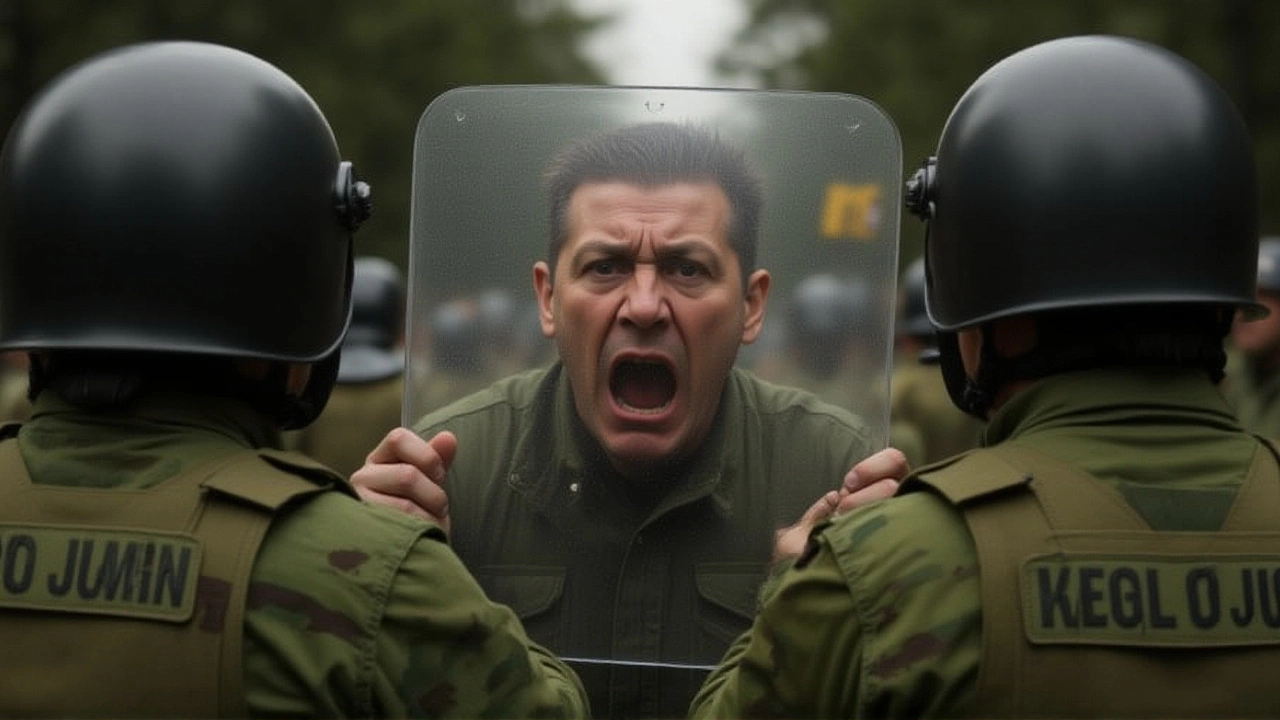Mexico Floods Kill 76, Leave 31 Missing as Indigenous Communities Struggle in Isolation

Seventy-six dead. Thirty-one missing. Over 70,000 homes ruined. And still, more than a hundred communities remain cut off — not by choice, but because the earth itself collapsed around them. Between October 7 and 11, 2025, eastern Mexico was hammered by a perfect storm of torrential rain, swollen rivers, and weakened hillsides, turning towns into islands and villages into graveyards. The disaster, triggered by the convergence of two tropical storms and an already saturated rainy season, left a trail of devastation across Veracruz, Hidalgo, and Puebla states. By October 21, the United Nations Office for the Coordination of Humanitarian Affairs (UNOCHA) confirmed the grim toll: 76 lives lost, 31 still unaccounted for, and at least 70,445 homes damaged or destroyed. But numbers don’t tell the whole story. In places like Álamo, Veracruz, floodwaters rose five feet in minutes. Medical clinics were submerged. Equipment floated away. Staff treated patients under open skies.
The Human Toll in the Mud
In Veracruz, where 29 people died according to WLRN, rainfall hit 24 inches in just four days — more than most residents had ever seen in a year. Governor Rocío Nahle said over 300,000 people were directly affected. In Hidalgo, where half of the isolated villages sit, roughly 100,000 homes were damaged or washed away. Rescue teams waded through waist-deep water for days. The Mexican Navy alone carried out 900 rescues on October 10 — one day. In some areas, rivers didn’t just rise; they exploded. One resident, Neptalí Rodríguez, described walking six to seven hours just to reach a road. "We want people to know that we’re working… that they can see we also care about their situation," he said. Meanwhile, Ramírez — whose full name wasn’t reported — and her grandmother were finally evacuated after waiting days. Her family, dozens of neighbors, remained stranded on a hillside as the river below "was on the verge of collapsing."Healthcare Collapses, Aid Struggles to Reach
When floodwaters surged into the local health center in Álamo, Veracruz, every piece of equipment was ruined. "We had to set up triage under tarps," said local health director Martí Batres. No power. No clean water. No refrigeration for medicines. Pregnant women gave birth outdoors. Children with fever were treated with bottled water and cloth. The collapse of basic services turned a natural disaster into a public health emergency. Yet even as aid organizations like UNICEF, Save the Children, and Médecins du Monde Suisse mobilized under EU-funded projects, access remained impossible. Eleven-two communities — 74 in Hidalgo, 31 in Veracruz, seven in Puebla — were still unreachable as of October 21. Helicopters couldn’t land. Roads were washed out. Trails turned to rivers.Why Indigenous Communities Are Paying the Highest Price
The PreventionWeb report from November 12, 2025, delivered a sobering truth: the heaviest impacts weren’t evenly distributed. Indigenous communities in eastern Mexico — many living in remote, mountainous areas with minimal infrastructure — bore the brunt. Their homes, often built on steep slopes or near riverbanks, were the first to slide. Their roads, rarely maintained, vanished first. Their calls for help went unanswered longest. In one village near the Veracruz-Hidalgo border, a Nahua elder told reporters, "We’ve seen floods before. But never like this. And no one came until the world saw the pictures." These aren’t just statistics. They’re generations of people who’ve been left behind by development plans, emergency protocols, and political promises.
Government Response: Promises vs. Reality
President Sheinbaum declared, "There are enough resources to respond, and the government will spare no expense." But "no expense" doesn’t mean "no delay." While federal funds were pledged, logistical bottlenecks choked delivery. Satellite maps from the Copernicus Emergency Management Service (EMSR845) showed 9 mapping products generated between October 13 and 21 — vital for planning, but useless if trucks can’t reach the roads they mark. The National Oceanic and Atmospheric Administration (NOAA) warned of more rain in the next 48 hours after October 21 — a terrifying prospect for families still sleeping on rooftops. Meanwhile, international agencies were forced to drop supplies by air — a stopgap, not a solution.What This Means for Mexico’s Future
This wasn’t an act of God. It was an act of neglect. Climate scientists have long warned that Mexico’s rainy season is becoming more intense, more unpredictable. The 2025 floods followed a pattern: record rainfall, crumbling infrastructure, and vulnerable populations in the path. The real question isn’t whether this will happen again — it’s whether Mexico will finally invest in early warning systems, landslide-resistant housing, and community-led disaster response. Indigenous groups aren’t asking for charity. They’re asking for dignity. For roads. For bridges. For a seat at the table when plans are made.
What’s Next?
As of mid-November, relief efforts are shifting from emergency rescue to long-term recovery. But without rebuilding infrastructure in the hardest-hit zones, the next storm will repeat the same tragedy. The European Civil Protection Mechanism (ECHO) and UNOCHA are pushing for coordinated regional planning. Local NGOs are training community volunteers in flood response. But the government’s next move will determine whether this becomes a turning point — or just another footnote in Mexico’s long history of disaster neglect.Frequently Asked Questions
How many people were affected in Veracruz, and why is it the hardest-hit state?
Over 300,000 people were affected in Veracruz alone, according to Governor Rocío Nahle. The state received 24 inches of rain in just four days — among the highest totals recorded in Mexico’s history. Its geography, with steep hillsides and aging drainage systems, made it especially vulnerable. Many communities sit directly along riverbeds that overflowed catastrophically, turning villages into isolated islands.
Why were 112 communities still inaccessible weeks after the floods?
Roads and bridges were completely washed away or buried under mudslides, particularly in mountainous regions of Hidalgo and Veracruz. Helicopter access was limited by weather and terrain. Many villages are only reachable by footpaths that became impassable rivers. Without heavy machinery and cleared routes, even basic supplies like food and medicine couldn’t reach those in need.
What role did climate change play in this disaster?
Scientists from NOAA and Mexico’s National Water Commission confirm that extreme rainfall events have increased by 40% in eastern Mexico over the past 20 years. Warmer ocean temperatures intensified the two tropical storms that converged over the region. Combined with deforestation and weakened soil from prolonged rains, this created conditions where landslides became inevitable — not accidental.
How are Indigenous communities being supported differently?
Organizations like Médecins du Monde Suisse and UNICEF are working with local Indigenous leaders to deliver aid in culturally appropriate ways — using native languages, respecting traditional healing practices, and prioritizing food and water over Western-style shelters. But systemic gaps remain: few emergency plans include Indigenous territories, and federal funding rarely reaches them directly.
Is there a risk of more flooding soon?
Yes. NOAA’s October 21 forecast warned of additional heavy rainfall in southern Mexico within 48 hours. With soil still saturated and rivers still swollen, even moderate rain could trigger new landslides. Communities that barely recovered are now bracing for a second wave — and many have no place to go if they must evacuate again.
What can be done to prevent this from happening again?
Experts say Mexico needs three things: early warning systems tied to local communities, investment in landslide-resistant infrastructure, and legal recognition of Indigenous land stewardship — which has historically reduced erosion and managed watersheds sustainably. Without these, every rainy season will bring the same tragedy, and the same silence from the capital.